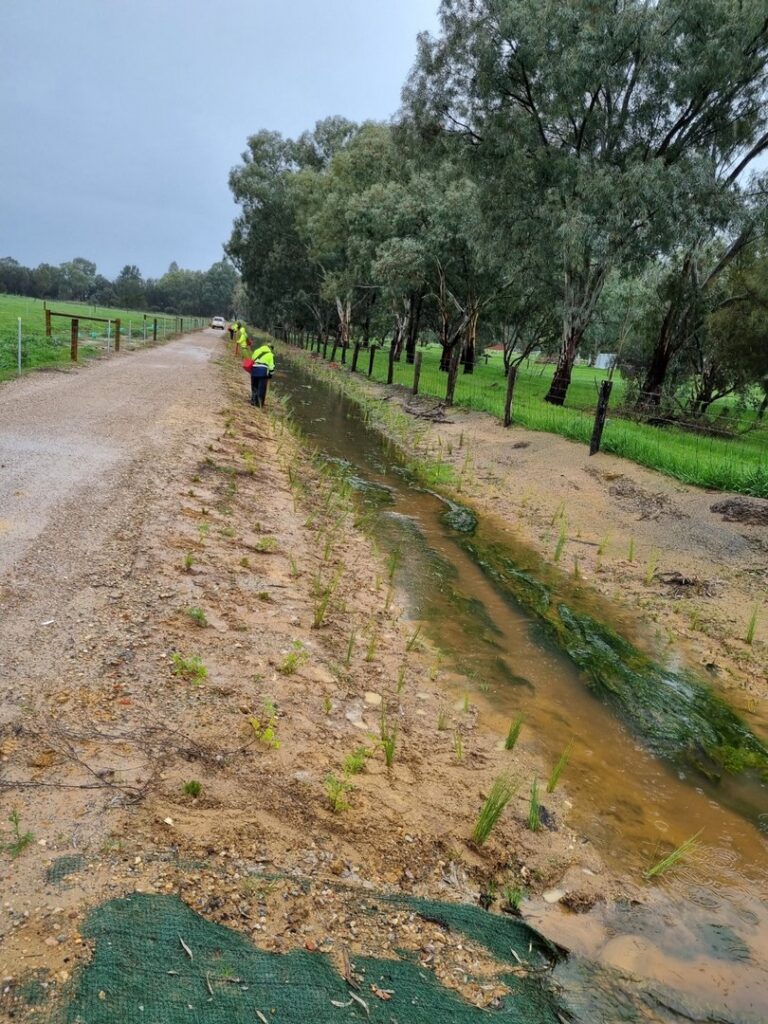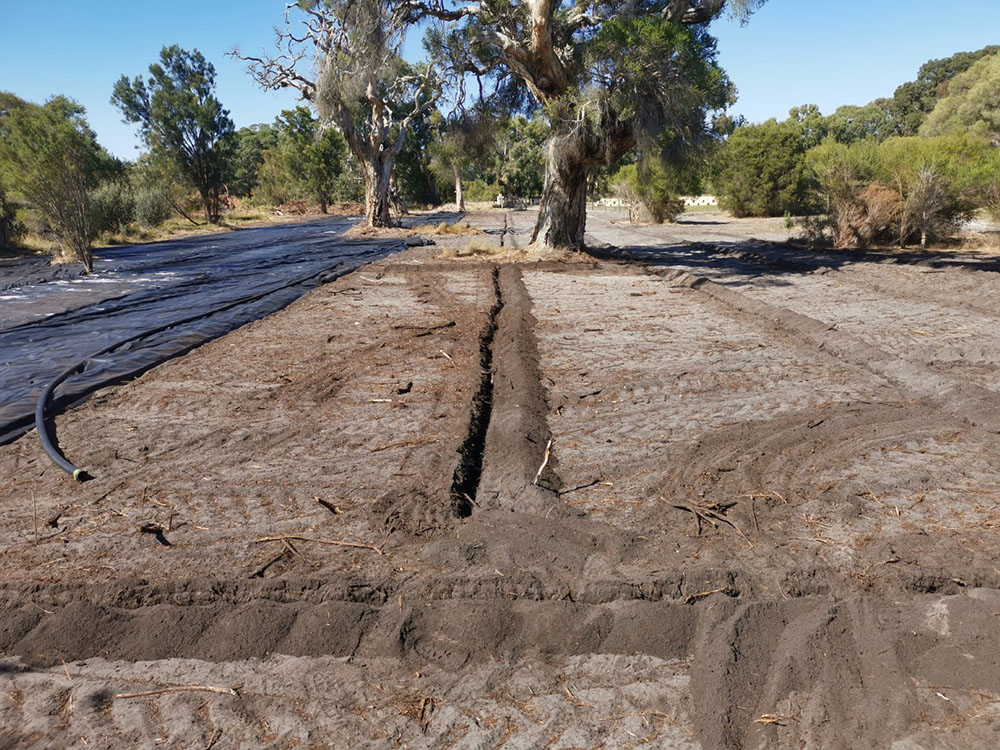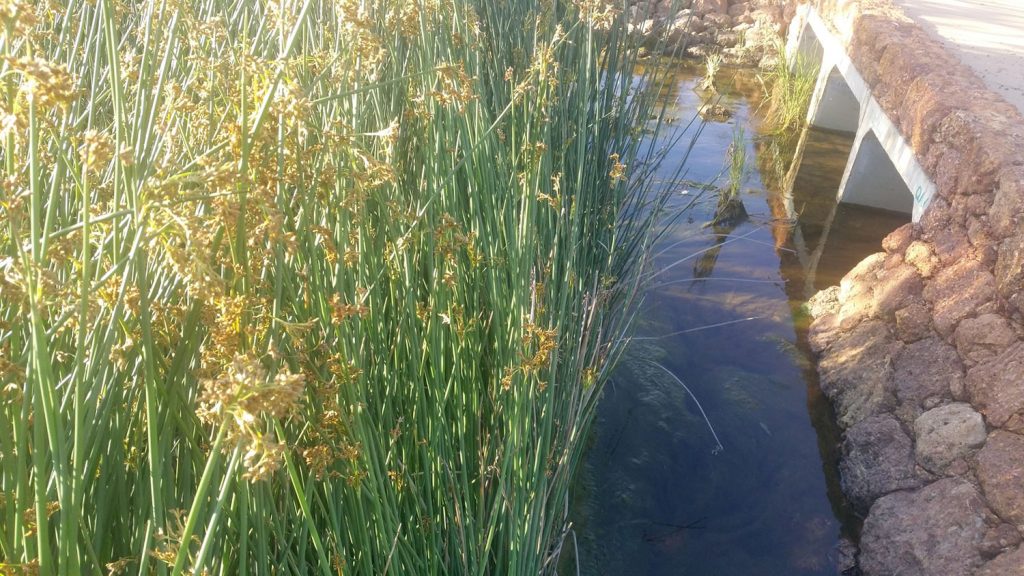Design Tips for Developers
By Brett Kuhlmann — Vivacious Surrounds
In modern Western Australian developments, stormwater management isn’t just a functional necessity — it’s a key opportunity to create lasting ecological and community value.
Well-designed wetlands and streams can manage water sustainably and become beautiful, living features that define the identity of a new development.
At Vivacious Surrounds, we’ve seen how the best projects use these systems to combine engineering performance with biodiversity, habitat, and amenity — turning practical drainage into a true environmental asset.
Traditional drainage systems focus on one thing: moving water away as quickly as possible.
But with increasing urban density, changing rainfall patterns, and higher environmental expectations, that approach is no longer enough.
Wetlands and vegetated streams play a vital role by:
- Reducing peak flows and controlling flooding.
- Filtering pollutants and sediments before runoff enters natural waterways.
- Recharging groundwater through infiltration.
- Providing valuable habitat for birds, frogs, and pollinators.
- Enhancing amenity and community wellbeing through greener, cooler, more attractive public spaces.
For developers, these systems can also help meet local government conditions on water quality, biodiversity, and landscape performance — all while boosting the market appeal of new estates.
One of the most common challenges we see is that stormwater infrastructure and landscaping are treated as separate stages.
In reality, they work best when designed together.
Early integration allows developers to:
- Align grading and hydrology with natural landform patterns.
- Design basins and channels that look and function like real wetlands and creeks.
- Combine hydraulic performance with biodiversity outcomes.
- Avoid costly redesigns when council conditions require environmental enhancements later.
At Vivacious Surrounds, we collaborate with engineers and landscape architects from concept stage, ensuring water management areas meet technical targets and deliver ecological integrity.
Here are some of the design considerations that make stormwater wetlands and streams both functional and beautiful:
- Mimic natural flow patterns — slow, spread, and filter water instead of channelling it.
- Include zones for permanent water, shallow marsh, and ephemeral edges.
- Plan for seasonal variation to support diverse flora and fauna.
- Use local provenance native species suited to each hydrological zone (e.g. sedges, rushes, and native grasses).
- Combine submerged, emergent, and terrestrial species for layered habitat.
- Select resilient plants that handle both inundation and dry periods common in WA’s climate.
- Incorporate features such as habitat logs, rock clusters, and nesting boxes.
- Design water bodies with gentle slopes for safe fauna access.
- Connect wetlands with green corridors to encourage movement of wildlife.
- Integrate walking trails, boardwalks, or viewing platforms for community engagement.
- Add interpretive signage explaining the ecological function — this helps councils and residents appreciate the value.
- Design for visual interest across all seasons with a mix of textures, colours, and vegetation forms.
Wetlands and streams can be complex, but with the right strategy they add measurable value.
Here’s what works best in practice:
- Plan early. Bring environmental and landscape consultants into the civil design process before bulk earthworks begin.
- Design for maintenance. Access for sediment removal and plant management should be built in from day one.
- Budget realistically. Allocate adequate funding for establishment and early maintenance — it ensures long-term success and compliance.
- Monitor outcomes. Councils increasingly require monitoring of vegetation and water quality post-construction. Having baseline data helps demonstrate compliance easily.
When developers take these steps, wetlands become assets — not obligations.
In one recent project, we worked with a developer to convert a proposed drainage basin into a functional wetland reserve that doubled as public open space.
By integrating native planting and gentle flow zones, the area now supports frog populations, waterbirds, and pollinators — all while managing runoff from surrounding lots.
What started as a compliance task became a centrepiece of the community — proof that environmental infrastructure can also be a selling point.
Integrating stormwater management through wetlands and streams helps developers satisfy multiple landscape approval criteria at once:
- Water quality and retention targets (WSUD compliance)
- Tree canopy and green infrastructure objectives
- Habitat enhancement and biodiversity outcomes
- Community amenity and heat island reduction
By addressing these conditions holistically, you streamline your approval process and demonstrate leadership in sustainable design.
At Vivacious Surrounds, our passion is creating landscapes that function ecologically and enhance development value.
With over 25 years’ experience in wetland restoration, revegetation, and natural area management, we understand the science behind stormwater systems — and the realities of delivering them in construction environments.
We assist developers with:
- Wetland and creek design aligned with WSUD and local government policies.
- Native species selection and planting plans tailored for performance and resilience.
- Weed control and long-term maintenance programs to protect investment.
- Monitoring and reporting to demonstrate compliance and environmental success.
Our approach ensures your projects achieve their landscape and environmental objectives efficiently and sustainably.
Wetlands and streams are more than infrastructure — they’re the living heart of sustainable development.
When designed well, they transform stormwater into a resource, support local ecosystems, and create places where people genuinely want to live.
The future of development in WA is water-wise, nature-rich, and community-focused — and Vivacious Surrounds is here to help make it happen.
Contact Brett and the team at Vivacious Surrounds to discuss how to integrate wetland and stream design into your next project — achieving compliance, beauty, and long-term environmental value.



